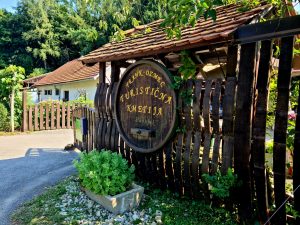March is one of my favourite months of the year. It has everything I could hope for by way of entertainment: great rugby as the Six Nations tournament continues, great speeches as the final of the Gift of the Gab draws near (Orfeum, March 14), and the St Patrick’s Day parade in Budapest (March 17). It’s a great month to be Irish in Budapest.
Now I’m on record as having little time for the type of expat who surrounds themselves with people from home; the type whose main aim in life is to recreate a mini-Ireland, a mini-England or a mini-wherever, in whatever city they expatriate themselves to. I’m all for moving abroad and embracing the culture of your new country – for however long you might stay. Travel broadens the mind; living amidst the locals gives you a new perspective and very often causes you to question long held and perhaps outmoded beliefs. I’m not for a minute suggesting that we all forget whence we came. But if we take advantage of our newness to ask questions, read up on the history, make an effort to learn the language, and generally mingle with the masses, it’s surprising how many links to home will appear unbidden.
The Hungarian connection
A couple of matches ago (this is how my time is measured in March) I was sitting in Jack Doyle’s delighted with Ireland’s solid win over Italy. I was in the company of two of the most intrepid expats I’ve come across in years. Their curiosity knows no bounds and their eagerness to make the most of their time in Budapest is a stark reminder of how quickly many of us start to take this city for granted. They’d just come back from Győr and asked me if I was aware of the Irish link with the city. I was a little taken aback to find that I didn’t know and a little embarrassed to think that I’ve yet to take the time to stop in the city and not simply train my way through it.
From Galway to Győr

The story starts in 1649 when Oliver Cromwell was busy persecuting Catholics in Ireland. Priests and nuns were hunted down without mercy; many were executed for practicing their religion. The then Bishop of Clonfert, Walter Lynch, one step ahead of Cromwell, fled first to Galway and then to Inishboffin Island from where he was smuggled out of the country to Belgium. With him, he brought a painting of Our Lady praying over the sleeping infant Jesus. Some years later, in 1655, he ended up in Vienna where he met the Bishop of Győr, János Pusky, who offered him as job as pastor of the Cathedral and later appointed him Auxiliary Bishop.
Exit Cromwell; enter Charles II
Just as Bishop Lynch had decided he could end his exile and return safely to Ireland, he died unexpectedly in 1663. In his will, he bequeathed his treasured painting to the city as a thank you for giving him a home. The painting hung without incident for 34 years in the cathedral at Győr. Many came to venerate, sure that Our Lady had interceded on their behalf ensuring victories over the Turks. But while Hungary was enjoying its newfound peace in 1697, Catholicism in Ireland was once again under threat.
On March 16, 1697, the Irish Parliament in Dublin convened. The first order of business was to consider and vote upon the passage of the Banishment Act to rid the country of all bishops, priests, and religious from Ireland. Drastic times, drastic measures.
One day later, on St Patrick’s Day, March 17, 1697, a miracle occurred in Győr. The Madonna in Walter Lynch’s painting began to cry tears of blood. Witnesses from many different religious denominations failed to provide an explanation. Word got out and thousands flocked to see the Weeping Madonna, many leaving their signatures as testament to what they had seen. The linen cloth used to dry the Madonna’s tears is now on display alongside her image.
Irish-Hungarian links
In 1997, to mark the 300-year anniversary of the Madonna’s tears of anguish, the Bishop of Clonfert John Kirby visited Győr. He had this to say: The kindness shown to Bishop Walter Lynch has led to an unusual link between the small Irish rural diocese of Clonfert and the large Hungarian diocese of Győr […] It has shown us the value of friendship and the way that the consideration shown to a refugee can deepen the understanding between peoples who might otherwise never have known each other.
When I think of all the great people, both Irish and Hungarian, whom I never would have met had I not taken that train to Budapest in 2007, I could shed a tear or two myself.
First published in the Budapest Times 9 March 2012
Share this:
- Click to share on X (Opens in new window) X
- Click to share on Facebook (Opens in new window) Facebook
- Click to share on Pinterest (Opens in new window) Pinterest
- Click to share on LinkedIn (Opens in new window) LinkedIn
- Click to share on Reddit (Opens in new window) Reddit
- Click to share on WhatsApp (Opens in new window) WhatsApp
- Click to share on Pocket (Opens in new window) Pocket
- Click to share on Telegram (Opens in new window) Telegram
- Click to email a link to a friend (Opens in new window) Email







3 responses